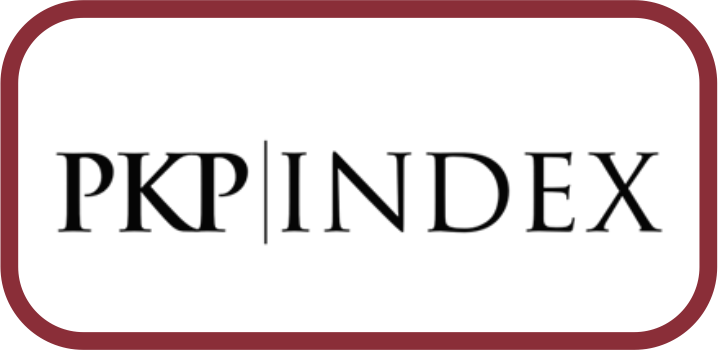ANALYSIS OF COMPETITIVE STRATEGIES CIGARETTE INDUSTRY IN INDONESIA, STUDY OF GO-PUBLIC COMPANY IN THE GOVERNMENT TRANSITION PERIOD
DOI:
https://doi.org/10.5281/zenodo.3952860Abstract
The cigarette industry in Indonesia is currently experiencing a pretty heavy pressure, which comes from changes in government policies such as restrictions on importing raw materials, promotional activities, excise tax rates and increasing taxes. The question arises as to the condition of competition in the cigarette industry, during the transition of the SBY presidential administration to president Jokowidodo (2012-2016). Five force porter (1989) is a generic tool to analyze competitive strategies. Then developed by Dobbs (2014) into a more structured, in-depth and strategic insight. This study describes how the performance of core players in the cigarette industry is assessed in terms of profitability ratios during the government transition 2 years before Mr President Susilo Bambang Yudhoyono was replaced by Mr President Jokowi. Then analyze the intensity of competition within the industry by using Dobbs Five Force framework (2014) to assess each side of the industry challenges.
References
Agus Maulana. (1997). Manajemen Strategik. Jakarta: Binarupa Aksara.
Christopher Masinde. (2014). The Application of Porter’s Five Forces Model on Organization Performance.
Creswell, J.W. (2007). Qualitative inquiry and research design: Choosing among five approaches (2nd ed.). Thousand Oaks.
Cravens, David W; Piercy, Nigel F. (2013). Strategic marketing 10th ed. New York: McGraw-Hill
David, Fred, R, (2011). Strategic Management Manajemen Strategi Konsep. Salemba Empat.
David S, (2013). Analyze the Hotel Industry in Porter Five Competitive Forces, The Journal of Global Business Management Volume 9 No.3.
Eriksen, Michael, et. al., (2015). The Tobacco Atlas 5th Edition. American Cancer Society 2015. Atlanta.
Fahey, Liam dan Randall, Robert M, (2000). The Portable MBA in Strategy, 2nd Edition, Wiley.
Griffin, Ricky F. (2004). Manajemen Edisi 7,
Hasibuan, (2000). Ekonomi industri persaingan, monopoli dan regulasi,
Hisyam, M.S. (1998). Analisa SWOT Sebagai Langkah Awal Perencanaan Usaha.
H Thabrany, (2015). Rokok Membunuh Bangsa, slide presentasi.
Husein Umar, (1999). Riset strategi perusahaan,
Imam Haryono, (2007). Road Map 2007–2020 Industri Hasil Tembakau Dan Kebijakan Cukai,
Kotler, Philip, (1997). Manajemen Pemasaran: Analisis, Perencanaan, Implementasi, dan Kontrol,.
Liam fahey dan Robert M. Randall, (1996), The portable MBA in Strategy.
Pearce & Robinson, (1997). Manajemen Strategik. Jakarta: Binabaru Angkasa.
Pearce dan Robinson, (2009). Manajemen Strategik. Jakarta: Binarupa Aksara.
Pitelis, C. N. (2008).The Sustainable Competitive Advantage and Catching-up of Nations: FDI, Clusters and the Liability (Asset) of Smallness.,
Porter, M. E, (1987), Strategi Bersaing,
Porter, M. E, (1980), Competitive Strategy: Techniques for Analyzing Industries and Competitors,
Porter, M. E, (1994), Keunggulan Bersaing: Menciptakan dan Mempertahankan Kinerja Unggul, From Competitive Advantage to Corporate Strategy. Harvard Business Review.
Pratiwi dan Anggraeni, (2013). Analisis Stuktur, Kinerja, dan Perilaku Industri Rokok Kretek dan Rokok Putih di Indonesia Periode 1991-2008, Jurnal Agribisnis Indonesia (Vol 1 No 1).
PT Erns&Young Indonesia. (2015). Kajian singkat potensi dampak ekonomi industry rokok di Indonesia. Jakarta
Rangkuti, Freddy, (2002). Analisis SWOT Teknik Membedah Kasus Bisnis. Gramedia pustaka.
Simon & Mudrajad, 2003. Struktur, Kinerja, dan Kluster Industri Rokok Kretek:Indonesia,
Sunariyah, (2003). Pengantar Pengetahuan Pasar Modal
Thabrany & Laborahima, (2016). People’s support on Sin tax to finance UHC in Indonesia. Jurnal Ekonomi Kesehatan Indonesia. Jakarta
T Hani Handoko, (2000).Manajemen Edisi 2
Downloads
Published
How to Cite
Issue
Section
License
Authors who publish with this journal agree to the following terms:
- Authors retain copyright and grant the journal right of first publication with the work simultaneously licensed under Creative Commons Attribution 4.0 International License that allows others to share the work with an acknowledgment of the work's authorship and initial publication in this journal.
- Authors are able to enter into separate, additional contractual arrangements for the non-exclusive distribution of the journal's published version of the work (e.g., post it to an institutional repository or publish it in a book), with an acknowledgment of its initial publication in this journal.
- Authors are permitted and encouraged to post their work online (e.g., in institutional repositories or on their website) prior to and during the submission process, as it can lead to productive exchanges, as well as earlier and greater citation of published work (Refer to The Effect of Open Access).










1.png)
